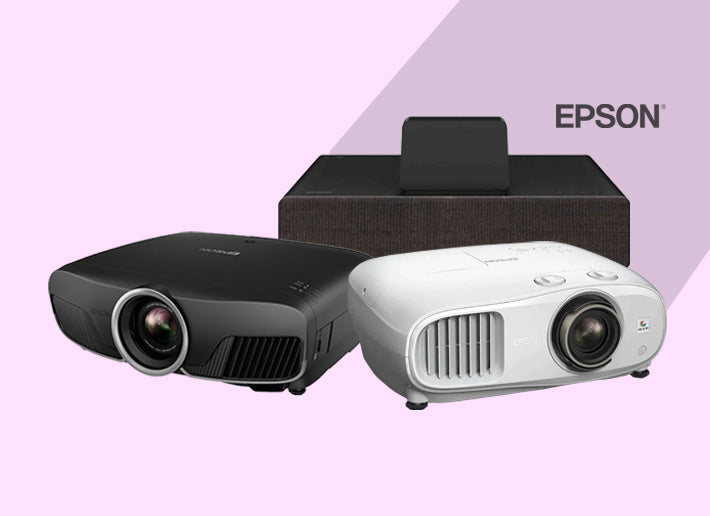We dive into the differences between balanced XLR and single-ended RCA audio cables, exploring their physical characteristics, impact on signal quality and practical use cases.
If you’ve owned any audio equipment you specifically purchased for how it sounds, chances are you’re familiar with a common dilemma. You might have stood in front of a rack of cables at your local dealer (or spent an excessive amount of time online), wondering whether you should grab that balanced XLR or the simpler RCA.
If you've spent any time in the audio world, we’re sure you’ve heard of both cable types and maybe even seen audiophiles passionately debating which is superior for audio output. Whether setting up a professional studio, upgrading your home theatre, or just squeezing out every bit of quality from your sound system, knowing the difference between XLR and RCA cables is crucial.
In this article, we’ll dive into the basic differences between the two cable types, explore their sound profiles, where they are best used and lots more to help you decide which one suits your needs the best. Let’s get started.
Also Read: How to Choose a Right Speaker Cable Type?
A Primer on XLR and RCA Cables
XLR and RCA cables may look like simple wires, but there’s a world of a difference in how they handle sound. XLR cables (generally) use three pins (versions with more pins also exist) in a triangular configuration and carry a balanced signal. Of the three, one is used for the positive signal, one for the negative and the third is a ground wire. Balanced cables often use differential signalling. They send two copies of the same signal, but one is inverted. At the receiving end, these signals are compared and combined. Any noise picked up along the way affects both signals equally and is cancelled out when they're recombined. This is primarily the reason behind their popularity in professional setups.
XLR connectors, while a bit bulkier, offer a satisfying 'click' when properly connected, ensuring a secure fit. They're also designed to be 'hot-pluggable', meaning you can connect and disconnect them while the equipment is powered on (though it's always wise to turn down the volume first).

Image credit - Wikipedia
RCA cables predate the XLR cable by a few years and were first used to connect phonographs to amplifiers. They are cylindrical jacks that are single-ended, using just two wires. One carries the signal and the other is a ground wire. They are common fixtures in consumer electronics and can be found in many TVs, soundbars and record players. They have a clear advantage when it comes to ease of use. They're simple to plug in and unplug, and it's easy to see which is left and right.

Image credit - Bluerigger
Now that we understand the basic makeup of both cable types, let’s see how they fare regarding their audio characteristics.
Signal Quality and Cable Length
One of the biggest differences between XLR and RCA cables is how they handle noise. XLR cables shine in environments where interference is common, like in a busy studio or a cluttered AV rack. Their differential signalling acts like a force field against electromagnetic interference (EMI) and radio frequency interference (RFI).
Any electrical hums or interference picked up along the way can creep into your audio without that balancing act. That’s why you’ll often hear a hum in long RCA runs, especially if they’re placed near power cables or other electronics.
This is why cable length is a key factor when choosing between XLR and RCA. If you’re running audio over long distances – say, across a large room or between different sections of a studio – XLR cables will hold up, maintaining signal quality over 10, 20, or even 30 metres.
RCA cables, however, struggle with length. Over distances greater than a few metres, the signal can degrade and the audio might get muddled by noise. In most home setups though, this isn’t a big issue.


Image credit - Pin page
In our next section, we’ll briefly touch on compatibility and audio fidelity and understand the differences in this regard between the two cable types.
Sound Perception and Applications
Now, here’s the million-dollar question: do XLR cables sound better than RCA?
In theory, if your system is well-matched, the difference may be negligible in a home setting. But in a professional or high-end system, the noise rejection and signal clarity of XLR can make a noticeable improvement, especially if you’re working with long cable runs or interference-heavy environments. Audiophiles often argue that the improved shielding and balanced design of XLR cables result in more precise sound reproduction. Recording studios, concert venues, broadcast facilities and even some high-end home theatres opt for XLR because they’re reliable and immune to noise over longer distances.
That said, if your setup is relatively simple and the cables aren’t running long distances, RCA cables can deliver excellent audio quality, often indistinguishable to the average listener. Now let’s explore cost considerations and some real-world applications of both cable types to help you understand which one is right for you. If you’re hooking up a turntable, TV, or soundbar in your living room, RCA cables do the job just fine, especially if you’re not dealing with long cable runs.
When it comes to affordability, the key is to think about what you need – is your setup small and straightforward, or are you building something more advanced? XLR cables are usually more expensive than their RCA counterparts. If you’re an audiophile with a high-end system, the extra investment might be worth it, but for the average home setup, it might feel like overkill.
On the flip side, RCA cables are budget-friendly and readily available. You can find decent-quality RCA cables almost anywhere and they’re perfectly suited for simpler, shorter-distance audio setups.
It’s worth noting that prices have been coming down as balanced connections become more common in consumer audio.
Also Read: Unsung Heroes: Essential Cables for Your Home Theatre Setup
Recommendations and Future Trends
The audio world is seeing an increasing adoption of balanced connections in high-end consumer equipment. This trend is likely to continue as more audiophiles seek to replicate pro-audio setups in their homes.
However, we're also seeing a shift towards digital connections and wireless audio solutions. While these technologies bring their own sets of advantages and challenges, the fundamental principles we've discussed here—signal integrity, noise rejection and quality—remain relevant.
So, what's the bottom line? Here are some practical tips.
- For professional setups or long cable runs, balanced connections are the way to go
- For most home audio setups, single-ended connections will serve you well
- If you're building a high-end home audio system and your equipment supports it, consider balanced connections for potentially better performance
- Always buy the best quality cables you can afford, regardless of the type
- The weakest link in your audio chain will limit overall quality and there's no point in spending a fortune on cables if your source material is low quality
Choosing between XLR and RCA really boils down to your needs, environment and budget. Whether you choose balanced or single-ended, the most important thing is to sit back, relax and enjoy the music.
Explore our premium range of cables for your audio components or get in touch for a bespoke solution. Our team of experts can help you get up and running in no time.









